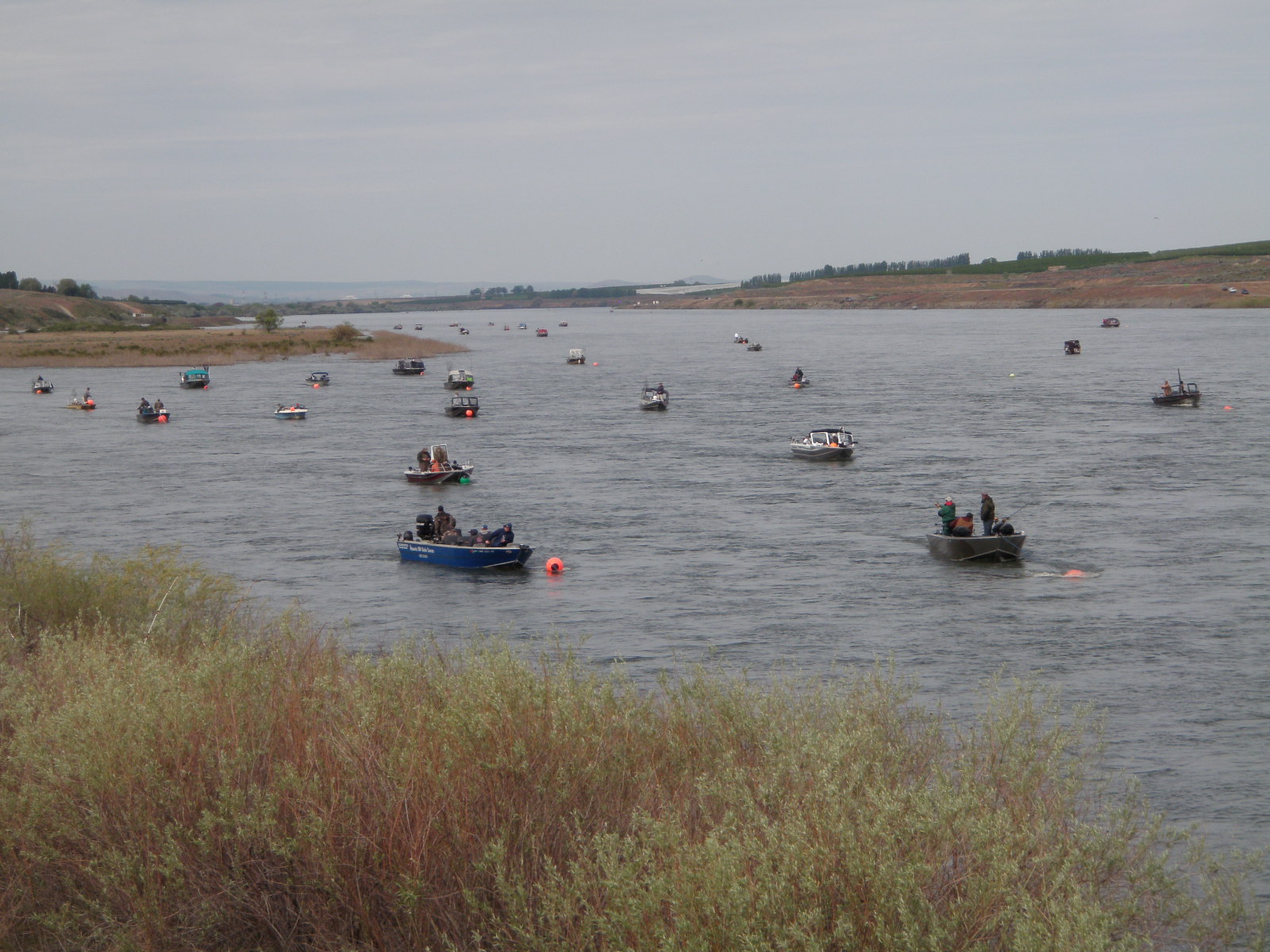Spring chinook anglers in the mid-Columbia and Snake rivers are as crazed and passionate as their lower Columbia brethren.
And on Monday, they asked for a change in the catch sharing to shift more harvest from downstream of Bonneville Dam to upstream.
A six-member Spring Chinook Advisory Group met with Washington and Oregon fishery managers in The Dalles to talk about ways to get the best seasons possible out of the limited spring chinook available.
There is a plethora of guidelines originating from the federal Endangered Species Act, the Columbia River Management Plan with the treaty tribes, and Washington and Oregon state policies governing spring chinook.
But, the bottom line is that the lower Columbia, mid-Columbia and lower Snake sport fisheries each get about 10 days to two weeks of decent fishing before having caught their respective shares, said Guy Norman, regional director for the Washington Department of Fish and Wildlife.
Since 2009, the sharing of spring chinook headed for upstream of Bonneville Dam has been 75 percent of the Endangered Species Act allowance to downstream of Bonneville Dam and 25 percent to upstream.
Nathan Grimm of the Tri-Cities and Lance Beckman of White Salmon, representing Eastern Washington interests, proposed the harvest of spring chinook headed for upstream of Bonneville to change to 60 percent for the lower Columbia and 40 percent for the mid-Columbia and Snake rivers.
Grimm said 80 percent of the river miles, 60 percent of the hatchery production and 40 percent of the anglers are upstream of Bonneville Dam.
“Spring chinook fishing does not have to end at Bonneville Dam,” he said. “I’m just asking for a more equitable fishery.”
Randy Woolsey of Tigard, Ore., representing the lower Columbia, said he doubts spring chinook angling downstream of Bonneville Dam would stay open even until April 1 if the shift to 60-40 is made.
Lower Columbia spring salmon anglers are passionate, too, he said.
“I can’t even describe how much time anglers put in trying to catch one,” he said “Some anglers only catch one every other season.”
Woolsey said he “dreads the thought” of an east-versus-west allocation fight before the two state fish and wildlife commissions.
Steve Martin, executive director of the Snake River Salmon Recovery Board, said “differential economics” need to be a factor.
The spending of $1 million on sport fishing is small in Vancouver, but is a big economic boost in the smaller communities of southeast Washington, Martin said.
Beckman said Columbia Gorge anglers get their days too early and want to be fishing in May.
“My constituents would love to see a 60-40 split of the upriver stocks,” Beckman said. “It sounds a lot better.”
John North of the Oregon Department of Fish and Wildlife pointed out: “If somebody wants more, somebody is going to get less.”
Additional spring chinook harvest is being phased from the lower Columbia commercial fishery to sport fishing as part of a process started in 2012 by Oregon Gov. John Kitzhaber and adopted by the Washington and Oregon fish and wildlife commissions early this year.
North said the gains from the commercial allocation shift potentially could be disproportionately distributed to benefit fisheries upstream of Bonneville.
Norman said the state agencies will take the comments from Monday and calculate catches, angler days and other information if some of the scenarios are implemented.
Another meeting of the advisory group is likely in October.




